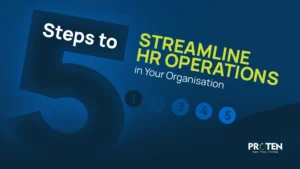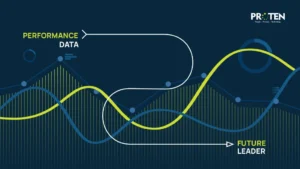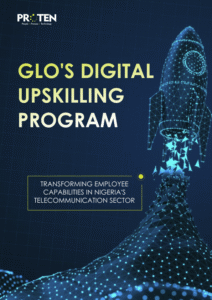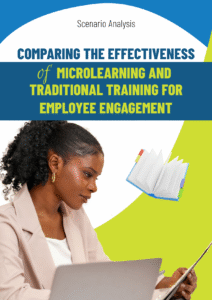Change is inevitable. The constant wind propels your businesses forward, challenging you to adapt and evolve. But just like a powerful storm, change can also be disruptive, causing uncertainty, resistance, and decreased productivity. So, how can your organization navigate this ever-present current and ensure a smooth (or at least manageable) voyage toward continuous improvement? The answer lies in change management models. These frameworks act as lighthouses, guiding organizations through the choppy waters of transformation. By understanding the different models available, you can equip yourselves with the tools and strategies needed to implement change effectively, minimize resistance, and ultimately achieve desired outcomes.
This article will discuss a range of prominent change management models, each offering a unique lens through which to view the change process. We’ll explore models that focus on the practical steps of leading change (like Kotter’s 8-Step Change Model), models that emphasize the psychological aspects of transition (like Bridges’ Transition Model), and models that help us understand why people resist change and how to address it (like the Resistance to Change Model). We’ll also explore other complementary models like the PDCA (Plan-Do-Check-Act) cycle, which provides a structured approach for implementing changes and ensuring continuous improvement.
By understanding each model, your organization can develop a comprehensive change management strategy tailored to its specific needs and context. But before we get into them, remember there’s no one-size-fits-all approach. What you can do is leverage the power of these models to illuminate the path forward, fostering a culture of adaptability and ensuring that change becomes a catalyst for growth, not a source of turbulence. So, let’s set sail and explore the vast expanse of change management models.
Why Is Change Management Important?
Change is inevitable in any organization, and as an HR professional, you play a critical role in ensuring a smooth transition during these times. Change can be disruptive and impact your workflow and morale. By implementing effective change management strategies, you can help minimize these disruptions and ensure the organization continues to function smoothly. Furthermore, employees are more likely to embrace change if they understand why it needs to be. This makes them feel involved in the process. Employees generally appreciate being involved and informed about company processes as it gives them a sense of ownership and helps them feel more connected to their work. HR plays a key role in communicating the rationale for change, addressing concerns, and getting employees on board.
In addition to these, change can be met with resistance. Through effective communication, training, and support, HR can help employees adjust to the new way of working, reducing resistance and negativity. A well-planned change management strategy increases the likelihood that the change will be adopted and achieve the desired outcomes. This reflects well on HR and demonstrates the value it brings to the organization.
In essence, effective change management helps you, as an HR professional, to be a champion for a positive and productive work environment during times of transition.
The Management Models You Should Know About
So, what are the change management models you should know as an HR professional? Let’s discuss them below.
1. Lewin’s Change Management Model
Lewin’s change management model, developed by Kurt Lewin in the 1940s, is a foundational framework for understanding and implementing change within organizations. Here’s a comprehensive breakdown of this classic model:
The Three Stages of Change:
Lewin’s model proposes a three-stage process for successful change, often likened to unfreezing, changing, and refreezing a block of ice. Let’s explore each stage in detail:
Unfreeze (Creating a Sense of Urgency):
This initial stage focuses on creating a compelling reason for change. It involves:
- Identifying the need for change: Analyze data, competitor landscape, or emerging trends to demonstrate the current state’s limitations.
- Communicating the need for change: Clearly articulate the benefits of change and the potential consequences of inaction. This fosters a sense of urgency and motivates employees to embrace the new way.
- Strategies for unfreezing can include data presentations, competitor analysis, showcasing industry trends, or sharing success stories of similar changes in other organizations.
Change (Implementing the New Way):
This stage involves putting the planned change into action. Key aspects include:
- Developing a clear vision and plan: Define the desired future state and outline the steps to achieve it. Ensure the plan is realistic, achievable, and communicated effectively.
- Managing the transition: Provide training, resources, and support to equip employees with the knowledge and skills needed to navigate the new processes or behaviors. Encourage open communication and address concerns promptly.
Refreeze (Embedding the Change in the Culture):
The final stage focuses on solidifying the change as the new normal. This involves:
- Reinforcing the change: Recognize and reward employees who embrace the new way of working. Celebrate successes and milestones to maintain momentum.
- Integrating the change into the organizational culture: Update policies, procedures, and performance metrics to reflect the new way of working. This ensures the long-term sustainability of the change.
Lewin’s change management model remains a valuable tool for initiating and implementing change within organizations. By understanding the three stages and their key activities, HR professionals can create a more structured and successful approach to leading change initiatives. Remember, Lewin’s model is a strong foundation, but consider combining it with other models to address the specific needs of your change project and organizational context.
2. McKinsey’s 7-S Model.
McKinsey’s 7-S Model, developed by McKinsey & Company in the 1980s, provides a holistic framework for analyzing and managing organizational change. It emphasizes the interconnectedness of seven key elements that influence an organization’s ability to adapt and thrive. Let’s delve deeper into each of these elements:
The Seven Interlocking Elements:
- Strategy: The organization’s overall plan for achieving its goals, including its competitive advantage and long-term direction.
- Structure: The formal organizational chart, reporting relationships, and workflow processes.
- Systems: The business processes, IT infrastructure, and other formal and informal systems that govern daily operations.
- Shared Values: The core beliefs, principles, and philosophies that guide employee behavior and decision-making.
- Skills: The knowledge, abilities, and competencies of the workforce needed to execute the strategy.
- Style: The leadership approach, management practices, and overall work culture of the organization.
- Staff: The human resources of the organization, including their capabilities, experience, and development opportunities.
The Core Message: Interconnectedness and Alignment
The 7-S Model emphasizes that these elements are not independent but rather interconnected and interdependent. A change in one element will likely necessitate adjustments in others to maintain overall balance and effectiveness. For instance, a shift in strategy (e.g., moving to a more digital focus) might require changes in skills (training in new technologies), structure (creating cross-functional teams), and systems (upgrading IT infrastructure).
Using the 7-S Model for Change Management:
Here’s how HR professionals can leverage the 7-S Model for managing change:
- Diagnosis: Assess the current state of each element to identify areas of misalignment or gaps that hinder effective change implementation.
- Alignment: Develop strategies to ensure all elements are aligned and support the desired future state. This might involve developing new skills, restructuring teams, or reinforcing shared values that promote the change.
- Communication: Clearly communicate the interdependencies between the elements and how changes in one area will impact others.
3. Kotter’s 8-Step Change Model
John Kotter’s 8-Step Change Model, introduced in his 1996 book “Leading Change” and further refined in 2014, provides a structured and sequential framework for leading successful organizational transformations. Here’s a breakdown of each step:
The Eight Steps to Leading Change:
Create a Sense of Urgency:
- Establish a compelling reason for change by highlighting the potential risks of inaction and the exciting opportunities the change presents. Gather data, conduct competitor analysis, or showcase industry trends to build a strong case.
Form a Powerful Guiding Coalition:
- Assemble a cross-functional team of influential leaders from various departments who are passionate about the change and can advocate for it across the organization.
Develop a Vision and Strategy:
- Clearly define the desired future state and create a detailed roadmap for achieving it. The vision should be inspiring and easy to understand, while the strategy should be realistic, achievable, and adaptable.
Communicate the Change Vision:
- Effectively communicate the vision and strategy throughout the organization using various channels, both formal and informal. Ensure clear, consistent messaging that resonates with employees at all levels.
Empower Action:
- Remove bureaucratic roadblocks and empower employees to take ownership of the change. Provide them with the resources, training, and support they need to implement the new way of working.
Generate Short-Term Wins:
- Celebrate and acknowledge early wins, no matter how small, to maintain momentum and build confidence. Short-term wins demonstrate the value of the change and motivate continued effort.
Consolidate Gains and Produce More Change:
- Use the momentum from early wins to drive further change. Refine the vision and strategy based on learnings and emerging challenges. Recognize and reward champions of change to sustain progress.
Anchor New Approaches in the Culture:
- Integrate the new behaviors, processes, and values into the fabric of the organization. Update policies, procedures, and performance metrics to reflect the new way of working. Hire and promote individuals who embody the desired culture.
4. The ADKAR Model: Ensuring Individual Adoption of Change
The ADKAR Model, developed by Prosci founder Jeff Hiatt, focuses on the individual and the five key outcomes they need to achieve for successful change adoption. It’s a valuable tool for HR professionals to ensure employees are equipped and motivated to embrace new processes or behaviors. Let’s delve into the five core elements of ADKAR:
The Five Outcomes of ADKAR:
- Awareness (A): Employees must be aware of the upcoming change, its purpose, and its impact on their work.
- Desire (D): Employees need to understand the benefits of the change and why it’s important for them to support it.
- Knowledge (K): Employees must have the necessary knowledge and skills to implement the change effectively. Training, resources, and clear instructions are crucial.
- Ability (A): Employees need to be confident in their ability to perform the new tasks or behaviors associated with the change. Practice opportunities and ongoing support can help build confidence.
- Reinforcement (R): Employees need ongoing encouragement and recognition to sustain the change over time. Positive reinforcement through feedback, rewards, and celebrating milestones can solidify the new way of working.
How HR Can Use the ADKAR Model:
HR professionals can leverage the ADKAR Model in various ways to promote successful change adoption:
- Conducting a change impact assessment: Identify which employee groups will be affected by the change and how. This helps tailor communication and support strategies.
- Developing targeted communication plans: Address the “A” and “D” aspects by clearly communicating the change, its benefits, and its impact on different employee groups.
- Designing effective training programs: Ensure employees gain the “K” needed to implement the change effectively. Training should be tailored to different learning styles and provide opportunities for practice.
- Providing ongoing coaching and support: Help employees build “A” by offering coaching, mentoring, and readily available resources to address challenges.
- Implementing a reinforcement program: Recognize and reward employees who embrace the change and demonstrate the desired behaviors (fulfilling “R”).
5. The Nudge Theory
The Nudge Theory, popularized by Richard Thaler and Cass Sunstein in their book “Nudge: Improving Decisions About Health, Wealth, and Happiness,” differs from traditional change management models. It focuses on influencing behavior through subtle cues and positive reinforcement, rather than through mandates or coercion. Here’s a closer look at this unique approach:
The Core Idea: Positive Reinforcement and Choice Architecture
Nudge theory is based on the premise that people’s decisions are often influenced by biases and heuristics (mental shortcuts). The theory suggests that by subtly changing the “choice architecture” – the way choices are presented – we can nudge people towards making better decisions for themselves. These nudges are designed to be libertarian, meaning they maintain freedom of choice but make the desired option more attractive or easier to select.
Examples of Nudging in Action:
- Opt-out vs. Opt-in for organ donation: People are more likely to become organ donors if they have to actively opt-out of donation, compared to a system where they have to opt-in.
- Healthy food placement in cafeterias: Placing healthier options at eye level or at the beginning of a serving line can nudge people towards healthier choices.
- Pre-commitment savings plans: Automatically enrolling employees in savings plans with the option to opt-out can increase participation rates.
Benefits of Using Nudges:
- Ethical and respectful: Nudges maintain individual freedom of choice, making them a more ethical approach to influencing behavior compared to mandates or restrictions.
- Cost-effective: Nudges often involve small changes to existing systems, making them a relatively inexpensive way to promote desired behaviors.
- Wide range of applications: Nudges can be applied to various areas, from promoting healthy habits to encouraging environmentally friendly practices.
6. Bridges’ Transition Model: Navigating the Emotional Journey of Change
Developed by William Bridges in his 1991 book “Managing Transitions,” the Bridges’ Transition Model focuses on the psychological aspects of change. It emphasizes that change is not just an event, but a process with distinct emotional stages that individuals go through. Understanding these stages can help HR professionals better support employees during periods of change.
The Three Stages of Transition:
Ending, Losing, or Disengagement (The Old Situation):
- This initial stage involves letting go of the familiar and what is being lost due to the change. Employees may experience feelings of denial, anger, sadness, or anxiety.
- HR Strategies: Provide clear communication about the reasons for change and what will be lost. Offer opportunities for employees to express their concerns and say goodbye to the old way of working.
The Neutral Zone (The In-Between):
- This transitional period is characterized by uncertainty, confusion, and a sense of disorientation. Employees may feel lost, unproductive, and unsure of their role in the new environment.
- HR Strategies: Provide support and resources to help employees navigate the uncertainty. Offer training and development opportunities to prepare them for the new way of working. Create a safe space for open communication and address employee concerns promptly.
The New Beginning (The New Situation):
- This stage marks the adoption of the new way of working. Employees experience feelings of optimism, hope, and renewed energy. They begin to see the benefits of the change and feel comfortable in their new roles.
- HR Strategies: Celebrate successes and milestones to maintain momentum. Recognize and reward employees who embrace the change and demonstrate the desired behaviors.
7. The Kübler-Ross Change Curve
The Kübler-Ross Change Curve, developed by psychiatrist Elisabeth Kübler-Ross in her work with terminally ill patients, is often applied to understand emotional responses to significant life changes, including organizational change. While not specifically designed for change management, it offers valuable insights into the emotional rollercoaster employees may experience during periods of transition.
The Five Stages of Grief (Adapted to Change):
- Denial: Employees may initially deny that the change is happening or refuse to believe it will impact them.
- Anger: Frustration and resentment can arise as employees grapple with the perceived negative aspects of the change. They may blame management or colleagues.
- Bargaining: Employees may attempt to negotiate or plead for exceptions to the change, hoping to minimize its impact.
- Depression: A sense of sadness, loss, and hopelessness can set in as employees come to terms with the reality of the change.
- Acceptance: Employees eventually adjust to the new reality and begin to move forward with a more positive outlook.
Limitations of Applying the Model to Change:
- Not a linear process: People may not experience these stages in a strict sequence, and they may revisit earlier stages throughout the transition.
- Focus on individual emotions: The model primarily focuses on individual responses and doesn’t account for group dynamics or organizational culture.
- Limited guidance for HR: The model doesn’t provide specific action plans for HR to address each stage.
How HR Can Leverage the Model:
- Anticipate resistance: By understanding the emotional stages, HR can anticipate potential resistance and develop strategies to address it.
- Empathetic communication: The model highlights the importance of empathetic communication, acknowledging employee concerns and validating their emotions.
- Targeted support: HR can tailor support throughout the change process. During denial, focus on clear communication. During anger, provide a safe space for venting. During depression, offer encouragement and support.
The Kübler-Ross Change Curve, while not a perfect fit for change management, offers valuable insights into the emotional journey of change. By understanding these stages and adopting an empathetic approach, HR professionals can create a more supportive environment and help employees navigate change more effectively.
8. The Satir Change Model
The Satir Change Model, developed by family therapist Virginia Satir in the 1970s, focuses on communication patterns and how they impact how individuals and groups respond to change. Unlike other models that emphasize stages or steps, Satir’s model offers a more nuanced understanding of communication dynamics during change initiatives.
The Five Communication Styles:
- Placating: Individuals prioritize appeasing others and avoid conflict. They may downplay their needs or concerns to maintain harmony.
- Blaming: Individuals focus on assigning fault and placing blame on others for problems or challenges.
- Distracting: Individuals divert attention away from the issue at hand by introducing irrelevant topics or humor. They may seem scattered or unclear.
- Congruent: Individuals communicate openly, honestly, and directly. They express their thoughts and feelings authentically while considering others’ perspectives.
Applying the Model to Change Management:
- Identify dominant communication styles: Recognize how individuals or groups tend to communicate during change discussions. Are they placating, blaming, distracting, or congruent?
- Address unhelpful communication styles: Help employees move towards more congruent communication by encouraging them to express their thoughts and feelings directly while being respectful of others’ perspectives.
- Promote active listening: Encourage active listening skills to ensure clear understanding and prevent miscommunication during change discussions.
Strengths of the Satir Change Model:
- Focus on communication: Highlights the importance of clear and effective communication throughout the change process.
- Understanding resistance: Provides insights into how communication styles can contribute to resistance or acceptance of change.
- Promotes collaboration: Encourages a more collaborative approach to change by fostering open and honest communication.
9. Resistance to Change Model
There isn’t a single “Resistance to Change Model,” but rather a collection of frameworks that explore the reasons why people resist change and offer strategies to overcome it. Here’s an overview of some prominent models and how they can be applied:
1. Maurer’s 3 Levels of Resistance:
This model by Richard Maurer identifies three primary levels of resistance:
- Rational Resistance: Based on logic and a critical evaluation of the change’s benefits and drawbacks. (e.g., Employees may resist a new software due to concerns about its effectiveness or learning curve.)
- Emotional Resistance: Driven by fear, uncertainty, or a sense of loss associated with the change. (e.g., Employees may fear job security due to a restructuring initiative.)
- Habitual Resistance: Linked to comfort with the existing routines and a dislike of disruption. (e.g., Employees may resist a new workflow because they’re comfortable with the old way of doing things.)
Addressing Resistance using Maurer’s Model:
- Rational Resistance: Provide clear data and evidence to address concerns about the change’s benefits and feasibility.
- Emotional Resistance: Acknowledge and validate employees’ feelings, and offer support and resources to navigate the emotional journey.
- Habitual Resistance: Offer clear training and support to help employees adapt to the new routines and workflows.
2. Kotter’s 8-Step Change Model (Addressing Resistance):
While Kotter’s model focuses on leading change, it also acknowledges resistance as a key hurdle. Here’s how it addresses resistance:
- Create a Sense of Urgency: Clearly communicate the reasons for change and the potential consequences of inaction, fostering a sense of need for change.
- Empower Action: Provide employees with the autonomy and resources to take ownership of the change, reducing feelings of helplessness.
- Generate Short-Term Wins: Celebrate early successes to demonstrate the change’s value and build momentum, overcoming cynicism.
3. Lewin’s Change Management Model (Unfreezing Stage):
Lewin’s model emphasizes creating a sense of urgency (unfreezing) as the first step in change. This urgency can help overcome resistance by making the need for change apparent.
Additional Tips for Addressing Resistance:
- Open Communication: Maintain clear, transparent communication throughout the change process to address concerns and rumors promptly.
- Employee Participation: Involve employees in the change process whenever possible. This fosters a sense of ownership and reduces feelings of being imposed upon.
- Effective Training and Support: Provide comprehensive training and ongoing support to ensure employees have the knowledge and skills to navigate the change effectively.
- Recognize and Reward Champions: Identify and acknowledge employees who embrace the change and champion it amongst their peers.
10. The PDCA Cycle
The PDCA (Plan-Do-Check-Act) cycle, also known as the Deming Cycle or Shewhart cycle, is a foundational framework for continuous improvement used in various fields, including project management, quality control, and change management. Here’s a detailed breakdown of its four stages:
1. Plan:
- Define the problem or opportunity: Clearly identify the area you want to improve or the challenge you need to address.
- Develop a plan: Establish your goals and objectives for the change. Outline the specific steps you will take to achieve them. This includes identifying the resources needed, assigning roles and responsibilities, and setting a timeline.
- Develop methods for measurement: Determine how you will measure the success of your plan. Define key performance indicators (KPIs) to track progress and evaluate the effectiveness of the implemented changes.
2. Do:
- Implement the plan: Put your plan into action. This involves training employees on new processes, rolling out new tools or technologies, and making the necessary adjustments to workflows.
- Monitor and document the process: Closely observe how the plan is unfolding. Collect data and document any challenges or unexpected outcomes.
3. Check:
- Analyze the results: Evaluate the data you collected against the KPIs you established in the planning stage. Did you achieve your goals? Were there any unintended consequences?
- Identify areas for improvement: Based on your analysis, pinpoint areas where the plan fell short or where further optimization is possible.
4. Act:
- Take corrective action: Based on your findings in the Check stage, make necessary adjustments to the plan or process. This could involve revising procedures, addressing identified issues, or completely changing course if the initial plan proves ineffective.
- Standardize successful changes: If the implemented changes yield positive results, formalize them into standard operating procedures to ensure consistency and long-term sustainability of the improvement.
- Plan for the next iteration: The PDCA cycle is continuous. Use the learnings from this cycle to inform the planning stage of the next iteration, aiming for ongoing improvement.
Strengths of the PDCA Cycle:
- Simple and easy to understand: The four-stage structure provides a clear and straightforward roadmap for improvement initiatives.
- Flexible and adaptable: The PDCA cycle can be applied to various situations, from small process tweaks to large-scale transformations.
- Emphasis on continuous improvement: The cyclical nature encourages ongoing evaluation and refinement, promoting a culture of continuous learning and adaptation.
In Conclusion…
The journey of organizational change is rarely smooth sailing. However, by equipping yourself with the right tools and strategies, you can navigate the inevitable storms and reach calmer waters. Change management models, explored in this article, offer a valuable toolkit for you and your organization.
Remember, there’s no single “perfect” model. The key lies in understanding the strengths and limitations of each framework and strategically selecting or combining elements from different models to suit your specific change initiative and organizational culture.
As you embark on your change journey, keep these key takeaways in mind:
- Focus on clear communication: Transparent and consistent communication is essential throughout the change process to address concerns, build trust, and foster employee buy-in.
- Embrace a people-centric approach: Recognize and address the human element of change. Employees go through emotional transitions, so provide support and encourage open communication.
- Plan for continuous improvement: Change is not a one-time event. Utilize models like the PDCA cycle to implement changes, measure progress, and continuously iterate for optimal long-term results.
- Celebrate success: Acknowledge and celebrate milestones and achievements along the way. This helps maintain momentum and motivates employees to stay engaged with the change process.
By adopting these principles and leveraging the power of change management models, you can transform change from a daunting challenge into an opportunity for growth and propel your organization towards a brighter, more successful future. Remember, change is not something to be feared, but rather an exciting current to harness for continuous improvement and long-term organizational success.










